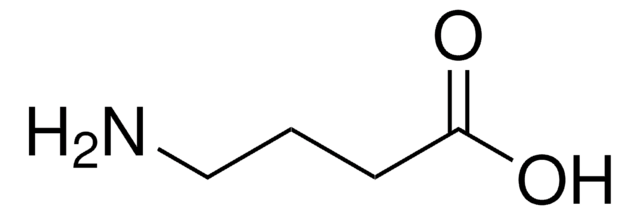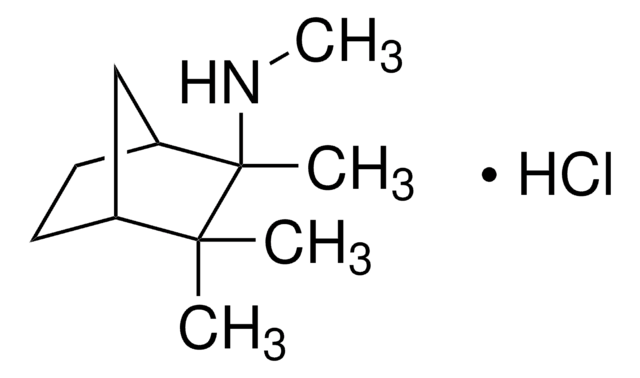G8134
Gallamine triethiodide
≥98% (TLC), powder, muscarinic receptor antagonist
About This Item
Productos recomendados
assay
≥98% (TLC)
form
powder
mp
235 °C (dec.) (lit.)
solubility
H2O: 100 mg/mL
ethanol: soluble
storage temp.
2-8°C
SMILES string
[I-].[I-].[I-].CC[N+](CC)(CC)CCOc1cccc(OCC[N+](CC)(CC)CC)c1OCC[N+](CC)(CC)CC
InChI
1S/C30H60N3O3.3HI/c1-10-31(11-2,12-3)22-25-34-28-20-19-21-29(35-26-23-32(13-4,14-5)15-6)30(28)36-27-24-33(16-7,17-8)18-9;;;/h19-21H,10-18,22-27H2,1-9H3;3*1H/q+3;;;/p-3
InChI key
REEUVFCVXKWOFE-UHFFFAOYSA-K
Gene Information
human ... CHRM1(1128) , CHRM2(1129) , CHRM3(1131) , CHRM4(1132) , CHRM5(1133) , CHRNA1(1134) , CHRNB1(1140) , CHRND(1144) , CHRNE(1145) , CHRNG(1146)
¿Está buscando productos similares? Visita Guía de comparación de productos
Application
- as a relaxant for measuring spinal trigeminal nucleus recordings from single neurons.
- as an antagonist in neuroblastoma cells as M2 receptor
- to reduce eye movement during retinal surgery in rat
Biochem/physiol Actions
Features and Benefits
Caution
signalword
Warning
hcodes
Hazard Classifications
Acute Tox. 4 Oral
Storage Class
11 - Combustible Solids
wgk_germany
WGK 3
ppe
dust mask type N95 (US), Eyeshields, Gloves
Certificados de análisis (COA)
Busque Certificados de análisis (COA) introduciendo el número de lote del producto. Los números de lote se encuentran en la etiqueta del producto después de las palabras «Lot» o «Batch»
¿Ya tiene este producto?
Encuentre la documentación para los productos que ha comprado recientemente en la Biblioteca de documentos.
Contenido relacionado
DISCOVER Bioactive Small Molecules for Neuroscience
Nuestro equipo de científicos tiene experiencia en todas las áreas de investigación: Ciencias de la vida, Ciencia de los materiales, Síntesis química, Cromatografía, Analítica y muchas otras.
Póngase en contacto con el Servicio técnico









